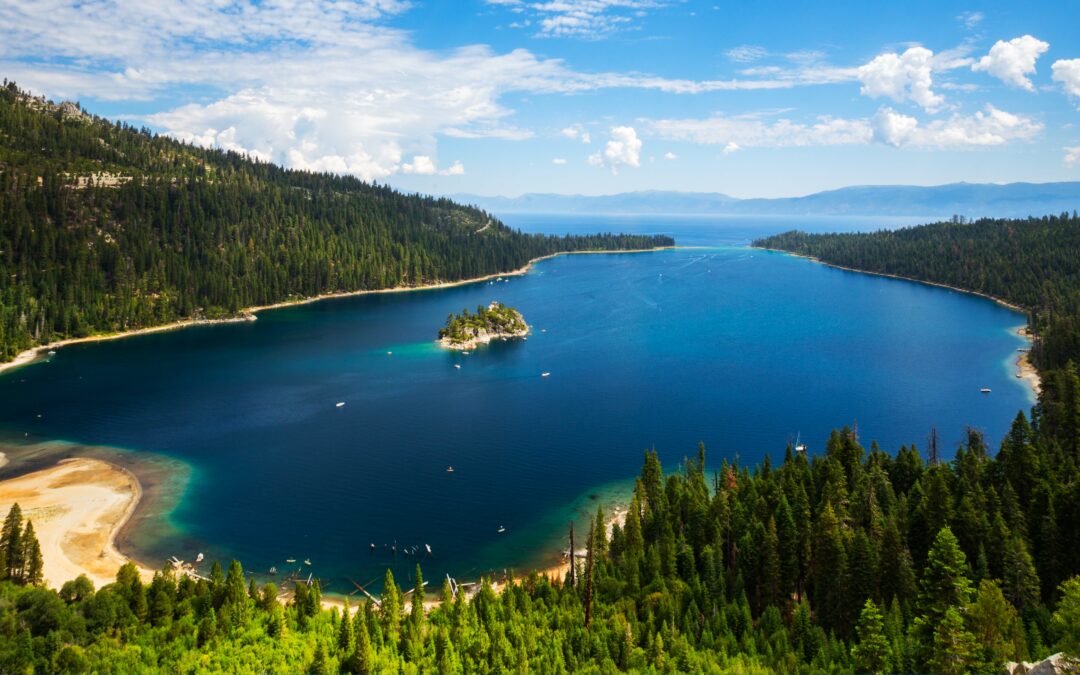By Cindy Gustafson and Hayley Williamson
Lake Tahoe has had its share of turning points. The mid 20th-century building boom was an infamous one. The rush to develop the Tahoe Basin brought about a steep decline in the lake’s world-famous clarity, which ultimately led the states of Nevada and California to sign a bi-state compact in 1969 creating a first-of-its-kind regional environmental planning agency.
Creation of the Tahoe Regional Planning Agency (TRPA) brought the basin together and led to science-based policies to manage growth, set development caps, and require new environmental standards and other improvements on all new projects.
As effective as TRPA’s initial actions were to curb overdevelopment, most of the development and environmental damage to Tahoe’s marshes, streams, and forests had taken place before the first Lake Tahoe Regional Plan. By the 1990s, the lake’s clarity was still in freefall and hundreds of restoration projects were needed to repair Tahoe’s fractured and declining ecosystem.
Once again, bi-state leadership sounded the alarm and so loudly it could be heard from Lake Tahoe to Washington D.C. In 1997, state, local, Tribal, and federal leaders came together to launch the Lake Tahoe Environmental Improvement Program (EIP) and create a new legacy for Tahoe. That summer, the late Nevada Senator Harry Reid, California Senator Dianne Feinstein, and others invited President Bill Clinton and Vice President Al Gore to hold a presidential summit here and to call for federal funding to match local public and private funding to begin to repair the watershed.
Now, a quarter of a century later, more than 80 organizations have come together to deliver more than 800 restoration and infrastructure projects improving water quality, transportation, forest health, and aquatic invasive species protection. Thanks to both public and private investments, the EIP has become one of the most comprehensive environmental restoration programs in the nation.
Last week, members of Lake Tahoe’s federal delegation, led by U.S. Senator Alex Padilla, gathered in Kings Beach with Washoe elders and state and local leaders to mark the 27th annual Lake Tahoe Summit. Officials from both sides of the aisle renewed the commitment to continue Lake Tahoe’s restoration as the region faces climate change, transportation, and housing challenges. They also stressed the importance of extending authorization of the Lake Tahoe Restoration Act, which has appropriated $100 million for Tahoe restoration projects just since 2016 and is set to expire next year.
Speakers recognized the significant EIP accomplishments to date, including:
- Constructing or improving 198 miles of bike and pedestrian trails.
- Completing 107,000 watercraft inspections with no new aquatic invasive species detected since the program started in 2008.
- Certifying 20,000 homes and businesses with stormwater Best Management Practices, or BMPs, to protect water quality.
- Retrofitting 836 miles of roadway with stormwater improvements, also to protect water quality.
- Treating more than 92,000 acres of forest to reduce hazardous fuels.
The lake’s clarity has shown positive signs as well. Since the early 2000s, the loss of lake clarity has stabilized. A new report on water quality improvements estimates more than 600,000 lbs. of fine sediment per year are being kept out of the lake, as well as an estimated 4,600 lbs. of nitrogen and 1,700 lbs. of phosphorus per year, which are main contributors to algae growth in the lake.
TRPA and our partners recognize that there is much more to do. We remain committed to meeting the Clarity Challenge of restoring the lake to its historic clarity of nearly 100 feet by pursuing more urban stormwater treatment and stream and meadow restoration projects. Further, the region is facing constant threats from wildfire, aquatic invasive species, and more extreme weather like last winter. We will also continue to improve the transportation system and better manage outdoor recreation and tourism through new partnerships in destination stewardship.
There are no simple solutions to the constant challenges faced by our beloved region. However, we have shown that collaboration around science-based solutions can make significant strides in protecting and restoring Lake Tahoe.
Finally, we’d like to offer special congratulations to the USDA Forest Service Lake Tahoe Basin Management Unit, whose 50th anniversary this year was recognized at the summit. This special unit of the Forest Service manages nearly 80 percent of the land in the basin and provides public access to unparalleled recreation while also fighting wildfire, leading forest resilience and watershed restoration projects, and improving the basin’s infrastructure. Congratulations on 50 years and thank you for your invaluable partnership!
Cindy Gustafson is Chair of the TRPA Governing Board and District 5 Supervisor for Placer County. Hayley Williamson is Vice Chair and Nevada At-Large member of the TRPA Governing Board.

